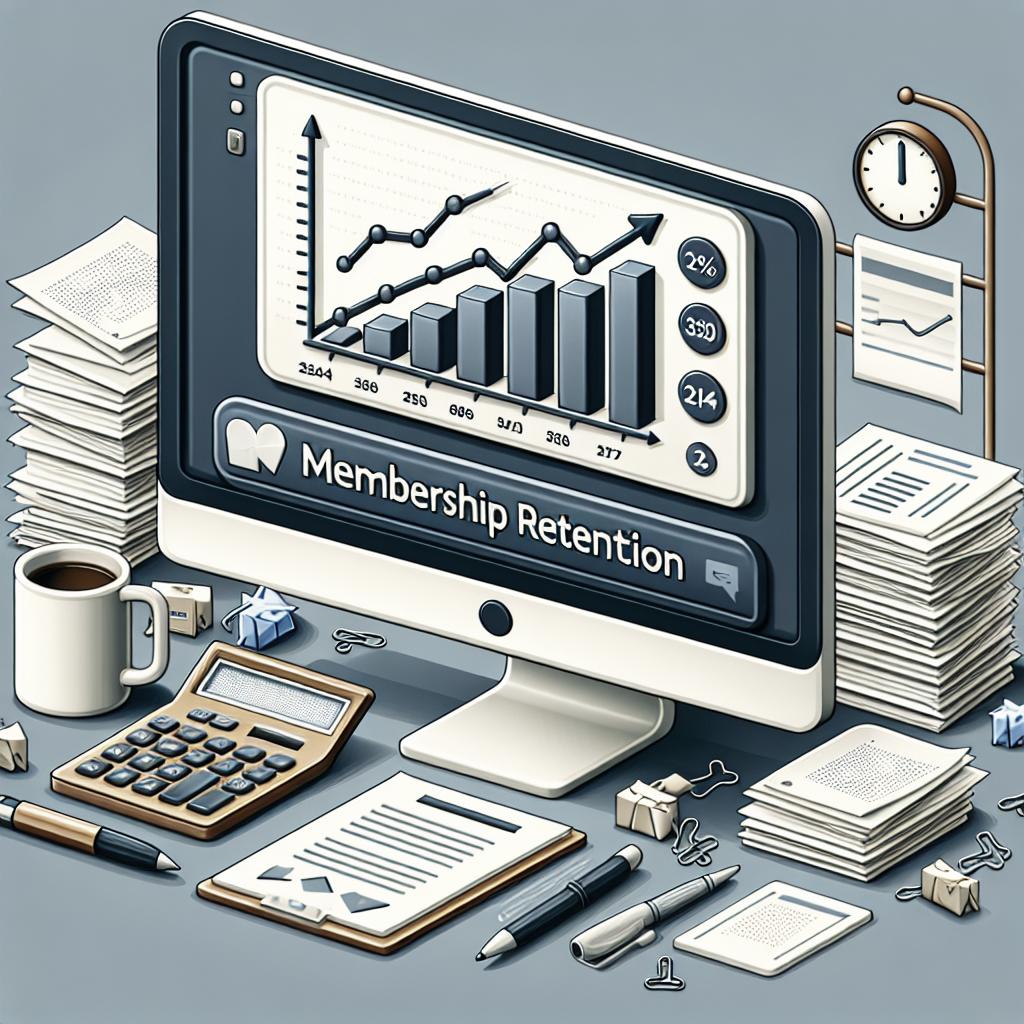Understanding Membership Retention Rate: A Comprehensive Guide
The success of any membership-based organization heavily relies on retaining its members. Membership retention is critical as it reflects the sustainability and value offered by the organization. This blog post delves into the concept of membership retention rate, exploring its calculation along with related metrics such as lapse rate and renewal rate. By understanding these metrics, organizations can make data-driven decisions to enhance member satisfaction and reduce churn. In addition, this guide provides insights on how to leverage these calculations for strategic growth. Let’s explore the intricate dynamics of membership retention with detailed explanations and practical examples.
Retention Rate
Retention rate is a pivotal metric representing the percentage of members who continue their membership over a specified period. It is calculated by dividing the number of members retained by the total number of members at the start of the period, multiplied by 100 to convert it to a percentage. A high retention rate signifies successful member engagement and satisfaction, indicating that the organization’s offerings align well with member expectations.
To calculate the retention rate, it’s important to establish clear time frames, such as monthly or annually, to evaluate the effectiveness of current strategies. For example, if an organization starts the year with 1,000 members and retains 800 by year’s end, the retention rate would be (800 / 1000) * 100 = 80%. Tracking this metric over time helps organizations identify trends and areas needing improvement.
Focusing on retention rate enables organizations to prioritize resources effectively, concentrating on high-value members and programs that enhance loyalty. It’s a crucial aspect of long-term growth and sustainability as retaining members typically costs less than acquiring new ones. Optimizing retention strategies often leads directly to improved financial health and organizational stability.
Lapse Rate (Churn)
Lapse rate, or churn rate, is the flip side of retention and is equally essential to understand. It quantifies the percentage of members who discontinue their membership within a specific period. Calculating the lapse rate is straightforward by subtracting the retention rate from 100%. A high lapse rate could indicate issues such as poor service quality, ineffective communication, or misalignment between the organization’s offerings and member needs.
For instance, using the previously mentioned data, if an organization begins with 1,000 members and ends with 800, the lapse rate would be 100% – 80% = 20%. Consistent monitoring of the lapse rate enables organizations to identify problematic trends and take corrective actions. This might involve enhancing customer service, improving communication with members, or revisiting the value proposition.
Reducing lapse rate can significantly impact an organization’s bottom line by decreasing the turnover of members. This involves implementing strategies such as personalized engagement plans, loyalty programs, and proactive retention campaigns to address potential issues before they lead to cancellations.
Renewal Rate
The renewal rate is another critical metric that focuses on the percentage of memberships renewed at the end of a period, usually on an annual basis. It highlights the organization’s ability to engage and convince members to continue their subscription, reflecting member satisfaction and perceived value. A high renewal rate not only indicates success but also points to the effectiveness of communication and service delivery.
To calculate the renewal rate, divide the number of renewed memberships by the number of memberships up for renewal within the period, then multiply by 100. For example, if 850 out of 1,000 members decide to renew, the renewal rate is (850 / 1000) * 100 = 85%. Keeping track of this metric allows organizations to evaluate the success of their renewal efforts and refine their approaches over time.
Improving the renewal rate often involves deploying targeted reminders, offering renewal incentives, and ensuring that renewing is a seamless process for members. Effective communication of benefits and value-added services before the renewal period can also significantly impact this metric. Organizations that excel in understanding member needs and delivering relevant solutions often see higher renewal rates.
Related Articles
To further enhance your understanding of membership retention dynamics, here are some articles that delve deeper into smart strategies and impactful practices:
-
“Engagement Strategies for Retaining Members”
-
“Loyalty Programs that Work”
-
“Communicating Value to Members: Tips and Tricks”
Next Steps
| Metric | Purpose | Calculation | Action |
|---|---|---|---|
| Retention Rate | Measures members retained over time. | (Retained Members / Initial Members) * 100 | Focus on value delivery and satisfaction to improve. |
| Lapse Rate (Churn) | Indicates the turnover of membership. | 100% – Retention Rate | Implement strategies to understand and reduce churn. |
| Renewal Rate | Reflects successful membership renewals. | (Renewed Members / Members Up for Renewal) * 100 | Refine renewal processes and enhance communications. |


